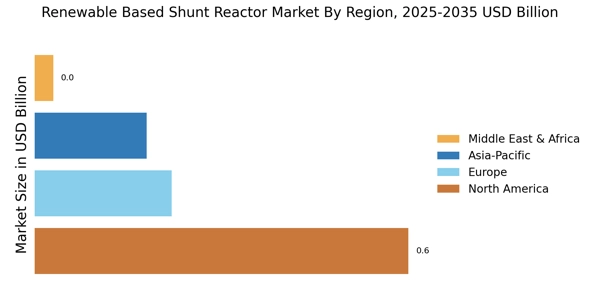Investment in Grid Infrastructure
Significant investments in grid infrastructure modernization are fueling the Renewable Based Shunt Reactor Market. Governments and private entities are increasingly allocating funds to upgrade aging electrical grids to accommodate the influx of renewable energy sources. This modernization often includes the installation of shunt reactors, which play a crucial role in voltage regulation and reactive power compensation. Reports indicate that the global investment in smart grid technologies is expected to exceed USD 100 billion by 2026. Such investments not only enhance grid reliability but also create a favorable environment for the adoption of renewable based shunt reactors.
Growing Demand for Renewable Energy
The increasing The Renewable Based Shunt Reactor Industry. As nations strive to meet ambitious carbon reduction targets, the demand for renewable energy technologies, including wind and solar, is surging. This shift necessitates the integration of shunt reactors to manage voltage levels and enhance grid stability. According to recent data, the renewable energy sector is projected to grow at a compound annual growth rate of over 8% in the coming years. This growth directly correlates with the rising need for efficient power management solutions, thereby propelling the demand for renewable based shunt reactors.
Rising Awareness of Energy Efficiency
The rising awareness of energy efficiency among consumers and businesses is influencing the Renewable Based Shunt Reactor Market. As stakeholders become more conscious of energy consumption and its environmental impact, there is a growing push for technologies that optimize energy use. Shunt reactors are recognized for their ability to improve the efficiency of power systems by reducing losses and enhancing voltage stability. This awareness is likely to drive investments in renewable based shunt reactors, as organizations seek to adopt solutions that align with their sustainability goals and improve overall energy performance.
Technological Innovations in Power Systems
Technological innovations in power systems are driving advancements in the Renewable Based Shunt Reactor Market. The development of smart grid technologies and advanced control systems has improved the efficiency and effectiveness of shunt reactors. These innovations enable better integration of renewable energy sources, allowing for real-time monitoring and management of power flows. As a result, the market for renewable based shunt reactors is likely to expand, with projections indicating a growth rate of approximately 7% annually over the next five years. This trend underscores the importance of continuous technological evolution in enhancing the performance of renewable energy systems.
Regulatory Frameworks Supporting Renewable Integration
Robust regulatory frameworks supporting the integration of renewable energy are a significant driver for the Renewable Based Shunt Reactor Market. Many countries are implementing policies that encourage the use of renewable energy and mandate the incorporation of technologies that enhance grid stability. These regulations often include incentives for utilities to invest in shunt reactors, which are essential for managing the variability of renewable energy sources. As regulatory bodies continue to prioritize sustainability, the demand for renewable based shunt reactors is expected to rise, aligning with the global shift towards cleaner energy solutions.


















Leave a Comment